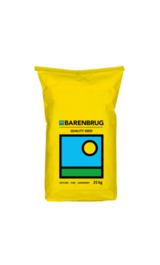Key features
• Early season maturity – 97 days to flowering (AUS)
• Good early root growth and establishment
• Good hard seed levels
• Demonstrates good persistence
Dalkeith belongs to the Trifolium subterraneum ssp. family and demonstrates a prostrate to semi-erect growth habit. It persists well on various soil types and has early maturity, requiring a minimum growing season of four months. It has a high hard seed level, which in combination with its early maturity, makes it well suited to low rainfall cropping rotations. Dalkeith has taken up well in the 350 to 600 mm rainfall zones. It will be able to provide good early herbage production in low rainfall zones. Care must be taken with new sown pastures so as not to overgraze too early, as plants can be pulled from the ground.



